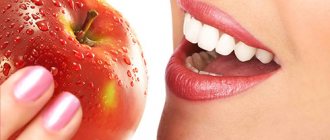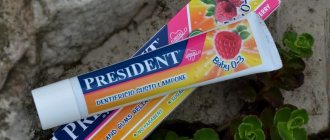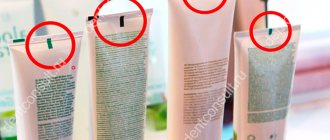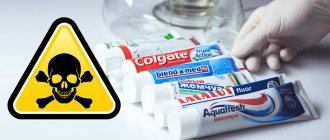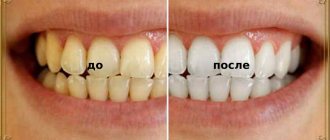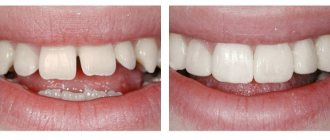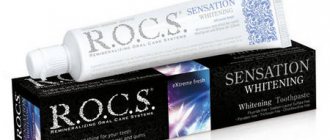A snow-white smile is an indicator of the health and degree of well-groomed teeth. It is for this reason that so much attention is now being paid to various whitening and healing dental procedures, which are increasingly being successfully carried out at home using aromatic essences. Essential oils for teeth have proven themselves to be highly effective and safe means for the care and restoration of tooth enamel and the entire oral cavity.
In general, essential oils can be used not only for teeth. You can find other recipes for using essential oils in a special section.
Kinds
Since dental problems vary widely, it is important to understand essential oils for teeth that have unique properties:
Tea tree
Tea tree essential oil for teeth is known for its antiseptic and disinfecting properties, thanks to which various pathogens are destroyed. In dentistry, the ethereal extract in question is primarily used as a component of rinsing solutions, which help relieve inflammation of the gums and get rid of bacteria that cause bad breath. Also, tea tree essential oil for teeth is well suited as a preventative against caries, diseases of the oral cavity and gums. Daily use of aromatic tea extract provokes quick results. In order to have a beneficial effect on the entire oral cavity, you can use toothpastes containing tea tree oil. The essential essence presented is especially effective in whitening tooth enamel. You can check this by preparing a special whitening paste based on tea oil:
- The peel of one banana is dried until completely dry and dark in color. For this purpose, the peel is placed on parchment-type paper and left in the sun. If you don’t have time, you can dry it in the microwave at medium temperature.
- The dried banana peel is ground into a powder.
- Fine salt in the amount of one teaspoon is dissolved in a similar amount of olive oil.
- An essential extract of tea tree in the amount of 3 drops and ground banana peel are added to the “oil salt” solution.
- Next, the resulting mixture is mixed.
- Next, take a toothbrush and rinse it under warm water.
- A small amount of the resulting oil paste is applied to the brush, after which the teeth are brushed for a couple of minutes.
The considered paste option effectively not only has a whitening, but also a healing effect. It is recommended to use this paste a couple of times a week.
Lemon
Lemon essential oil for teeth also effectively whitens tooth enamel and leaves a fresh aroma in the mouth, and also has a safe effect on teeth in comparison with other toothpastes and products with a whitening effect. There are several ways to use lemon essential oil for teeth:
a) Undiluted
For this purpose, a cotton pad is soaked in lemon juice and then applied to the surface of the tooth enamel. After a certain period of time, the oral cavity is rinsed with water, and the teeth are brushed with regular toothpaste.
b) Diluted in water
Lemon essential essence in the amount of a few drops is added to a glass of water, where it is thoroughly mixed. The resulting solution is great for rinsing after each brushing of your teeth.
c) With alcohol
To obtain a solution, a few drops of lemon are dissolved in alcohol and then in water. It is worth noting that this method has the greatest aggressive effect on tooth enamel.
d) With soda and hydrogen peroxide
It is known that baking soda and hydrogen peroxide, even separately, are effective means of combating yellow teeth. However, in order to achieve a quick and maximum effect, the presented components are used together with lemon essential oil. However, frequent use of such a composition should be avoided, since there is a high probability of irreversible damage to tooth enamel.
Other types of essential oils for teeth are also often used in dentistry according to the following problems:
- Toothache: mint, cloves, frankincense and sage. Cotton pads or gauze are soaked in these oils, which are then applied to the sore spot.
- Gum inflammation: fir, eucalyptus, rose, sage, chamomile. Applications are also made using these essential oils for teeth.
- Tooth decay : lavender, tea tree. As a rule, rinsing solutions are prepared from them.
- Teething : lavender, chamomile, mint. The presented mixtures will not only help children cope with the unpleasant sensations associated with the appearance of teeth, but will also perfectly calm them down and put them in a sleepy mood.
- Stomatitis : rose, sage, lavender. Cotton pads or gauze are moistened in an oil solution of these oils, after which the ulcers are treated with them.
You can also whiten your teeth not with lemon oil, but with the whole fruit! How? Watch the video:
Traditional methods of teeth whitening
- Baking soda. A good bleaching agent is the well-known baking soda. This acid neutralizer has been used for teeth whitening for many years. To whiten your teeth this way, you must first brush your teeth in the usual way. After this, you need to mix a little paste and soda on a cotton swab and wipe your teeth with the resulting mixture, leaving for five minutes. Then you should wash off the mixture and brush your teeth again with toothpaste. This procedure, performed regularly, can help significantly whiten tooth enamel.
Baking soda, lemon and sage for teeth whitening
- Truffle oil. This oil has an excellent way of giving teeth a white, shiny tint, reducing their yellowness. To whiten your teeth, you need to dip your toothbrush in truffle oil and then apply toothpaste to the brush. Brush your teeth as usual. This procedure must be repeated three times a day after each meal. As a result, the teeth will become whiter and the yellowness will disappear.
- Warm water. You can get milky white teeth using warm water. It helps wash away dirt from teeth, resulting in shiny and white teeth. This is why you should only use warm water when brushing your teeth.
- Hydrogen peroxide. Hydrogen peroxide is an excellent teeth whitening reagent. You just need to dip your toothbrush in peroxide and brush your teeth as usual. It is important not to swallow peroxide! Then you need to rinse with warm water. Teeth whitening with hydrogen peroxide is one of the most widely used traditional methods.
- Olive oil . Olive oil is known to help get rid of stains on teeth. It helps especially well in cases where the enamel has darkened due to excessive consumption of coffee and tea, as well as frequent smoking. To whiten teeth with olive oil, you just need to soak a cotton swab in it and wipe the surface of your teeth. This procedure will help whiten your teeth and restore their shine.
- Wood ash. An excellent reagent for teeth whitening is potassium hydroxide, which is found in wood ash. You should not resort to this whitening method too often, because over time, the hardness of potassium hydroxide can damage the enamel.
- Sea salt. When combined with plain water or apple cider vinegar, sea salt can work wonders. This product will help lighten your teeth enamel a little. A mixture of sea salt and apple cider vinegar (water) should be applied to the teeth for five minutes. But you should be careful, because... Frequent use of this method can damage teeth and increase their sensitivity.
- Basil leaves. Also, one of the traditional methods of teeth whitening is a mixture of dried basil leaves and orange peel. To prepare such a bleaching agent, you need to take 15-12 dried basil leaves and dry orange bark. You can mix this product with toothpaste and brush your teeth.
- Walnut. Chopped walnuts can also act as a natural bleach. In addition to whitening, the nut prevents the formation of bacteria and yellowing of teeth. The walnut should be finely chopped and gently rubbed into your teeth with your fingers. Don't rub too hard as this can damage your gums.
- Strawberry. Strawberries are rich in many nutrients that help reduce yellow teeth. For many years, strawberries have been used to whiten tooth enamel. Grind 2-3 strawberries to obtain a uniform paste. The resulting mixture must be used for regular teeth cleaning. You can notice the results within a few days.
Strawberries for teeth whitening
- Orange peel. Orange peel also has whitening properties. The orange peel must be dried for one day and then rubbed into the enamel surface. The results of using this product can be seen after the first week.
- Sage leaves. The leaves of a plant such as sage help whiten teeth and reduce yellow discoloration. In addition to this, they return the shine and strength of the enamel to the enamel. Darkened teeth should be cleaned regularly with sage leaves.
Application
Most often, dental diseases and inflammation of the gums are treated with rinsing solutions based on essential oils for teeth or special applications:
a) Rinse
In order to rinse the mouth, it is necessary to prepare a special solution based on soda or salt in the ratio of one teaspoon of the bulk component per glass of warm water, to which a certain amount of any essential oil for teeth is subsequently added. A quick result will be available if you rinse every hour every day.
b) Applications
The universal method of preparing applications is as follows:
- Essential oil for teeth in the amount of 5 drops is dissolved in 10 ml of alcohol or cold-pressed vegetable oil.
- A cotton swab is moistened in the resulting solution and then applied to the sore spot.
- The application time for this application is 15 minutes.
Which oil is the best?
As you can see, among other things, oil pulling will help strengthen your gums and whiten your teeth. All that remains is to understand the technology of execution and the varieties of the product. Sesame oil is considered the most effective for this procedure. This product contains high levels of antioxidants, tocopherols, which prevent blood vessel degeneration and lower cholesterol levels. Phytic acid contained in sesame oil helps slow down the aging of the body.
Cortisols, dopamines, or who is to blame that we love “bad guys”
Genka Lyapishev from “Big Change” has passed away. His grandson grew up to be his copy
An Argentine woman could not remove the ring from her finger: competent firefighters were able to help her
In addition to sesame oil, you can use any type of cold-pressed oil for rinsing: sunflower, coconut, olive. Doctors warn that if you have never cleansed your body with oil before, then it is better to start with sunflower or coconut oil.
What oils to use to lighten enamel
Essential oils are actively used in cosmetic procedures; they are added to all kinds of masks for hair, hands, nails, and skin. But not every product can brighten enamel. Essential oils for teeth whitening are tea tree and lemon oils. They can often be found in the instructions for organic toothpaste, as one of the components that has an antiseptic effect. They can be used separately or mixed for greater effectiveness directly on the brush before brushing. In addition to lightening the enamel, they will help you cope with the problem of bleeding gums and make your breath fresh.
The power of lemon for a brighter smile
Lemon is actively used to whiten nails, skin, and even in the fight against freckles. Therefore, there is no doubt that lemon essential oil is effective for teeth whitening. In addition, unlike freshly squeezed lemon juice, the essential substance obtained from this citrus does not damage the enamel as much. You can buy it for yourself in a specialty store or a regular pharmacy. The result will be provided only by a 100% natural product. The cost of a bottle can vary from 60 to 350 rubles, depending on the manufacturer and packaging.
Tea tree to lighten enamel
Teeth whitening with tea tree oil is extremely popular. It has a wide range of uses, reducing redness, healing wounds, and fighting acne. It is used as a main ingredient in homemade beauty recipes. The use of this substance for oral hygiene is highly effective. In addition to whitening, you will notice improved overall oral health and fresher breath. Teeth whitening with tea oil is an affordable method. You can buy a bottle at a pharmacy or order it online, the price starts from 80 rubles, the consumption is quite economical, only 2 drops are enough for one procedure.
Professional home whitening
We are talking about whitening using individual trays and gel. This method is no worse than the laser method or photobleaching, but has fundamental differences:
- can be used independently after consulting a doctor
- gentle concentration of active substances allows you to gently whiten teeth
- The duration of the course depends on the desired result
An individual mouthguard developed in the laboratory using impressions of your teeth is quickly put on and fits tightly, allowing the gel to effectively act on each tooth from the outside and inside. This is the main advantage of individual kits over standard mouth guards from a pharmacy.
All you have to do is get your personal whitening gel trays from your dentist, fill the tray with the product at home, place it on your clean teeth, and wear it as directed, day or night, whichever is most convenient for you. After just a few procedures you will notice the result. Easy, simple and safe, even for sensitive enamel.
You can start home whitening after professional hygiene and fluoridation procedures. Lightening clean and strong teeth up to 10 shades at home is absolutely possible.
How to carry out the teeth whitening procedure
If you decide to whiten your teeth with oil, read the step-by-step procedure. After this, you can carry out the procedure yourself step by step:
- Brush your teeth with toothpaste as you usually do.
- Apply a couple of drops of your chosen substance or a mixture of them to a damp brush.
- You need to clean with this product for at least 2 minutes, but no more than 5.
- Rinse your mouth thoroughly with water to remove any remaining substance.
The effectiveness of this product can be seen after the first cleaning. You will be surprised how much plaque remains on the enamel after cleaning with a regular toothpaste. And essential oils cope with it much better.
Precautionary measures
Despite the fact that teeth whitening with tea tree oil and lemon is considered one of the safest methods, there is still a risk of thinning the enamel if it is used excessively. You shouldn’t abuse even this seemingly harmless method. Do not transfer a procedure such as teeth whitening with tea oil and lemon into your daily oral hygiene ritual. You should not use this product more than once a week.
When using tea tree oil, you may feel a numb sensation on your tongue, and the lemon may cause a tingling sensation. This is considered a normal reaction, but if exposed for too long, these agents can cause burns to the mucous membrane. Do not exceed the recommended duration of the procedure.
Lemon essential oil in cosmetology
Lemon oil is used for the beauty of hair, nails, and body; it is added to creams, gels, and shampoos. In addition, lemon oil eliminates freckles and age spots. Mix 4 drops of chamomile oil, 7 drops of wheat germ oil and 3 drops of lemon oil. Apply the mixture of oils to problem areas of the skin with a cotton swab. And literally after 15 minutes, rinse with water.
We recommend reading: What are the benefits of pearl barley and who it is contraindicated for, how many calories it contains
The oil reduces the oily shine of the hair, so it is suitable for oily hair, the oil reduces the work of the sebaceous glands. Also perfectly lightens hair. Add a couple of drops of lemon oil to the portion of shampoo you wash your hair with.
Lemon oil is also used in nail care. It is enough to dissolve 2-3 drops of oil in a teaspoon of honey and stir everything in a glass of boiled water. Baths are made with this solution for literally 10 minutes. Perfectly whitens the nail plate.
And if you decide to take a bath with lemon oil, then you must first dissolve it in cream, sea salt, honey or yogurt.
If you do not have allergies or other contraindications to the use of lemon oil, then use it for health and beauty.
Source
More articles from the section “Benefits and harms of oils”
